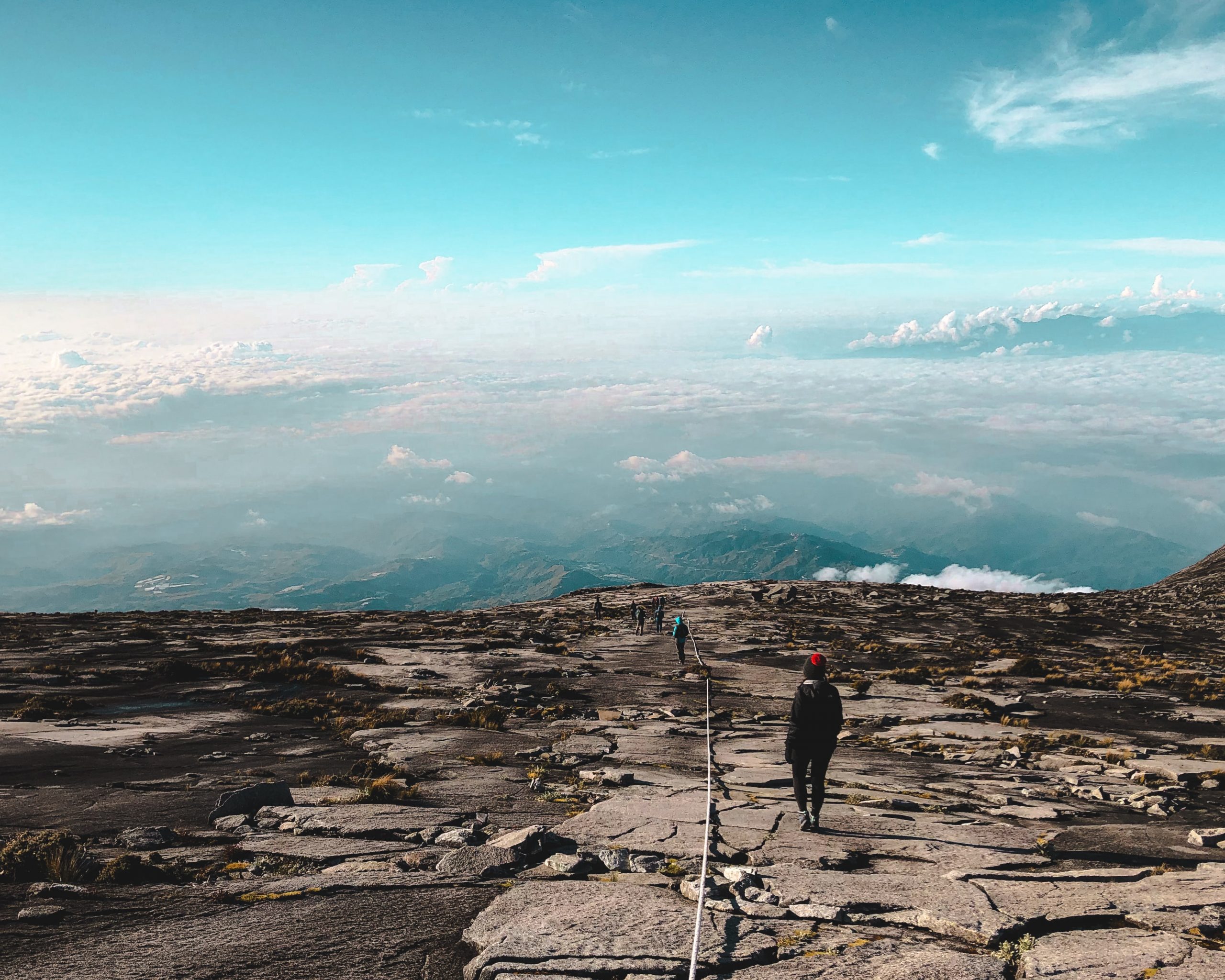
About Mount Kinabalu
Published on Nil | by mountkinabalu.com

Mount Kinabalu’s specialty lies in its location at a renowned World Heritage Site—Kinabalu Park. Nature lovers will be delighted to be able to witness the many variations of flora and fauna that are to be found on the mountain at different altitudes.
Mount Kinabalu, along with other upland areas of the Crocker Range is well-known worldwide for its tremendous botanical and biological species biodiversity with plants of Himalayan, Australasian, and Indo-Malayan origin.
A recent botanical survey of the mountain estimated a staggering 5,000 to 6,000 plant species (excluding mosses and liverworts but including ferns), which is more than all of Europe and North America (excluding tropical regions of Mexico) combined. It is therefore one of the world’s most important biological sites.
Standing majestically at 4,095m (13,435 feet above sea level), Mount Kinabalu is the highest mountain between the Himalayas and New Guinea. Mount Kinabalu derives its name from the Kadazan word, ‘Aki Nabalu’, meaning ‘the revered place of the dead’. It is one of the safest and most conquerable peaks in the world—provided that you’re reasonably healthy and physically fit.
The Summit of Borneo
Mount Kinabalu (Gunung Kinabalu) is the most dramatic feature in Sabah and the tallest peak between the Himalayas & the New Guinea. Towering at 4,095 metres (13,435 feet), Mount Kinabalu exerts a magical quality that is both indescribable and unbelievable. The granite peaks are constantly veiled in wisps of clouds and at times during a clear day, the summit reveals a distinct glacier carved pinnacles, rising from the smooth granite dome. It is one of the safest and most conquerable peaks in the world—provided that you’re reasonably healthy and physically fit.
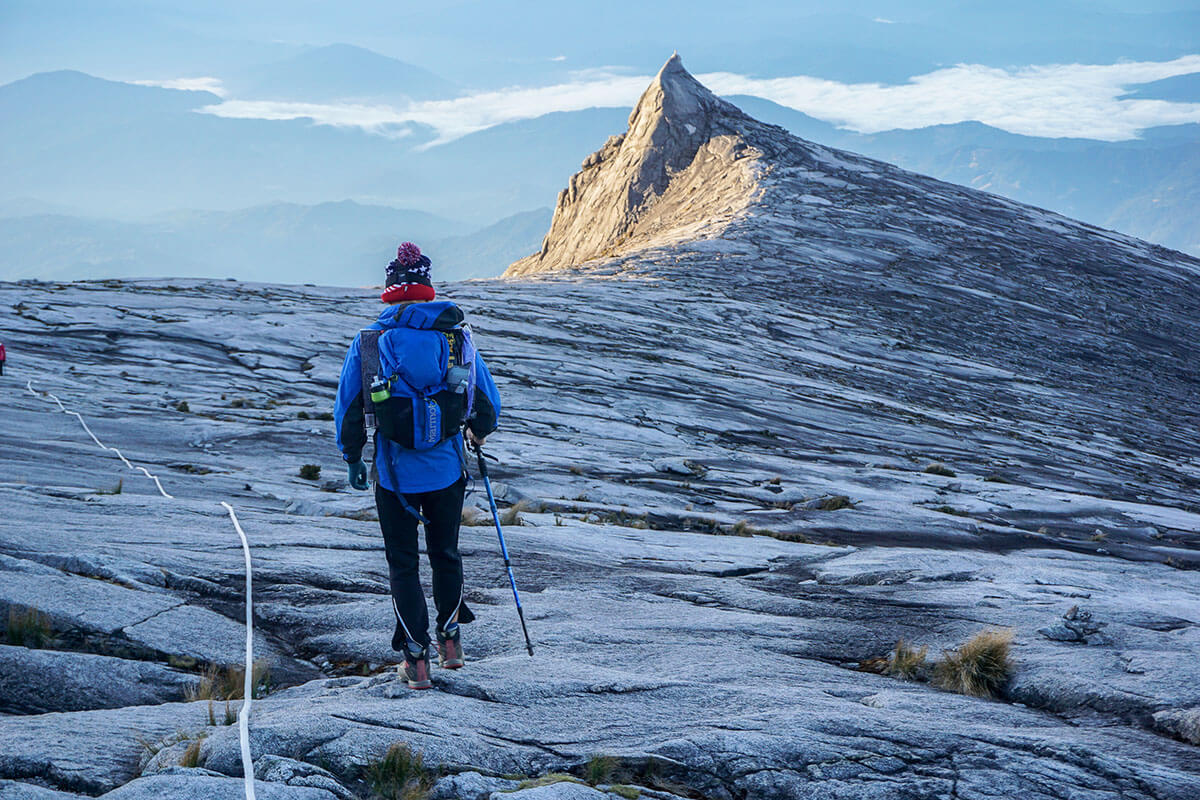
Legends & Myths – Mt Kinabalu Tale
Though young, it is the central focus of Kinabalu Park and the legends of the KadazanDusun people, Sabah’s largest ethnic group. The KadazanDunsun believe that the mountain is the sacred resting ground of the spirits of their ancestors. Mount Kinabalu derives its name from the Kadazan word, ‘Aki Nabalu’, meaning ‘the revered place of the dead’. There are many folklores and fables that tell stories of how Kinabalu got its name.
The mysterious KadazanDusun tribe believes that spirits dwell on the mountain top. According to another popular folklore, the name Kinabalu actually meant “Cina Balu”. “Cina Balu” translates into “chinese widow”. Legend tells a story of a Chinese prince who ascends from the mountain in search of a huge pearl guarded by a ferocious dragon. He married a Kadazan woman upon his successful conquest, whom he soon abandoned for return to China. His heartbroken wife wandered into the mountains to mourn whereby eventually she turned into stone.
Climbing Mount Kinabalu
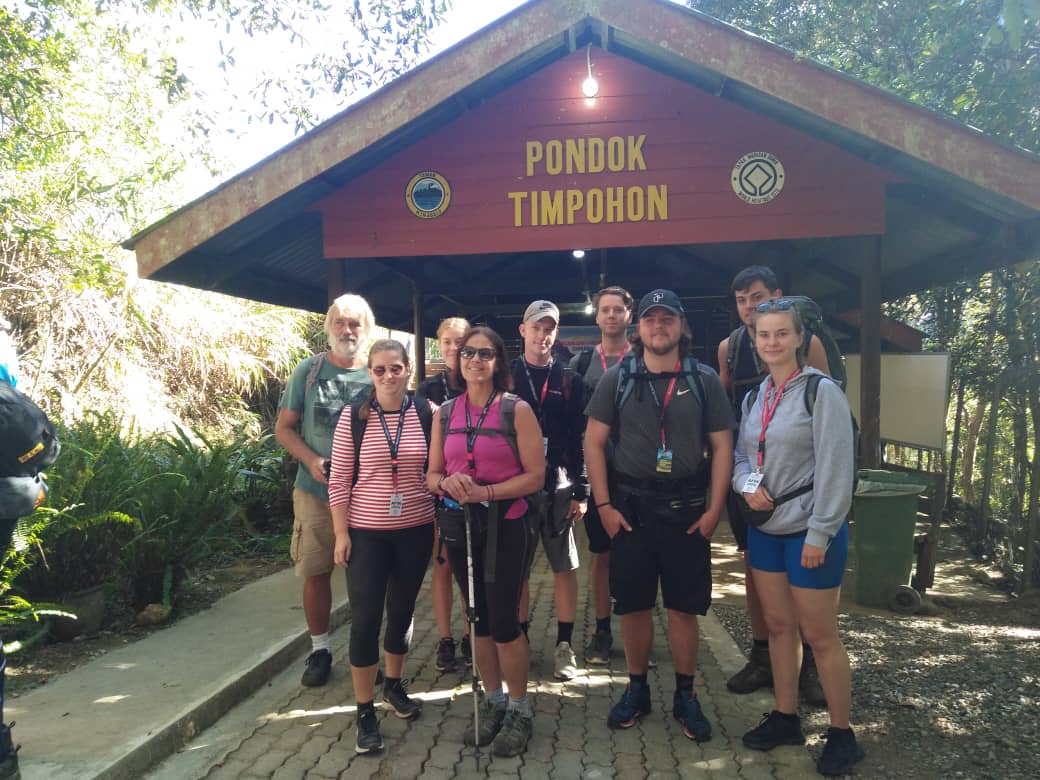
The highest point of the mountain (Low’s Peak) can be accessed relatively easily by any person with reasonable fitness, and required no technical climbing. It is a 8.8km trek to the top where the trail runs along the southern side of the mountain over the Tenompok ridge. Most climbers will take two days to climb up and down Mount Kinabalu with an overnight stay at the huts in Panalaban.
Before June 2015, climbers can choose from two available trails to climb Mount Kinabalu – the Summit trail (via Timpohon Gate) and the Mesilau trail (via Mesilau Gate). However since the 2015 earthquake, the Mesilau trail has since closed and two new trails have been constructed by Sabah Parks, mountain guides and local villagers to replace the old Summit trail. Part of the old Summit trail was destoryed during the earthquake and had remained inaccessible.
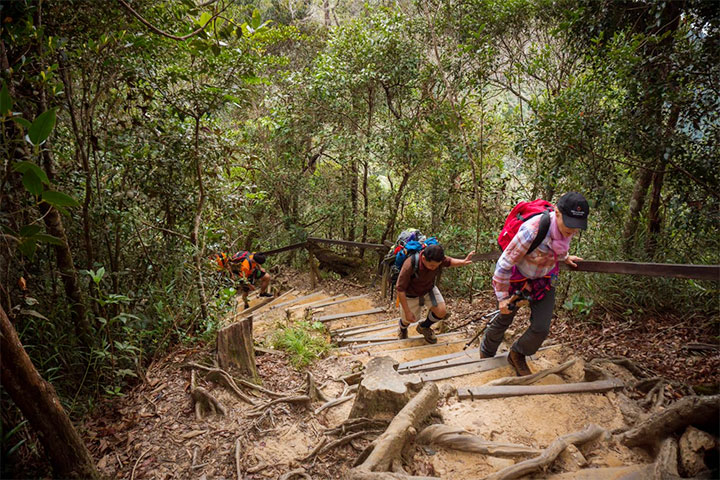
There are two trails to the peak, Ranau and Kota Belud trails. To see the difference, please click here. The new Ranau Trail (1.27 km) was opened to the public on 1st December 2015, followed by the more challenging Kota Belud Trail (1.1 km), which was opened a year later on 9th December 2016. Climbers are only allowed to climb up and down Mount Kinabalu via Timpohon Gate and ascend the peak using one of the two new trails; Ranau Tail, located east of the old trail and Kota Belud Trail, to the west. Both trails will meet at Sayat Sayat. This Ranau trail is now the standard “tourist-friendly” trail leading to the summit from Panalaban as it is relatively easier and safer because the path is less steep and mostly made of wooden staircases and manageable rock steps.
The route to the Mount Kinabalu Summit starts from the Timpohon Gate (1,866m; 6,122 ft) which is located near the Kinabalu Park Headquarters. Climbers will take the minibus to the Timpohon Gate and their ascent commence at about 9 a.m. in the morning. All climbers must be accompanied by mountain guides at all times.
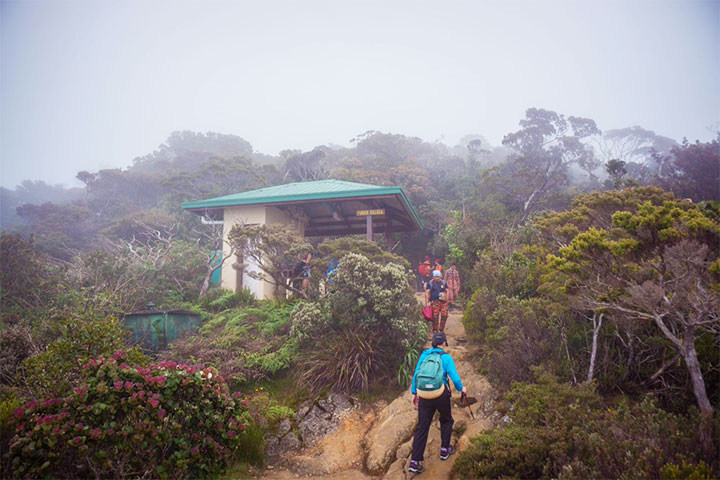
Before reaching Panalaban (3,273m; 10,738 ft) where all the huts that provide rooms, food and hot beverages are located, climbers will encounter a series of trail shelters (pondok)— the first shelter, Pondok Kandis (1,981m; 6,499 ft), and the second shelter, Pondok Ubah (2,081m; 6,827 ft). The forest becomes thicker and mosses and ferns become abundant. After 30 minutes, the third shelter, Pondok Lowii (2,267m; 7,500 ft) is reached.
Soon after, the trail splits with one leading to telecom towers and the main trail to the summit continues on the right. After Pondok Mempening (2516m; 8251 ft), the fouth shelter, the trail soon leads to an open exposed area at Layang-Layang (2,702m; 8,865 ft) where there is a small mountain rescue hut located here. Climbers will notice an abundance of pitcher plants. After about 45 minutes, Pondok Villosa (2,961m, 9,714 ft), situtated atop an open rocky patch will be reached and a small track leads to a helipad at 3,052 m.
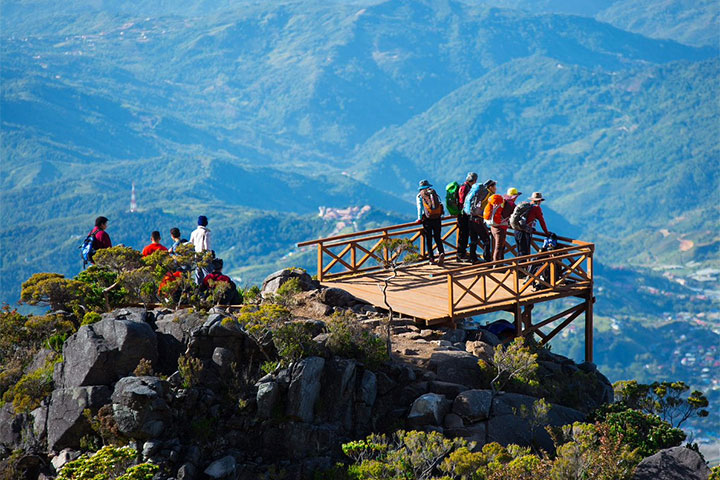
The forest has changed from stunted ultramafic vegetation to sub-alphine plants, taller trees and granite boulders after the helipad junction. Pondok Paka (3,080m; 10,105 ft) named after the nearby Paka Cave is reached within a few minutes. The Paka Cave is not a cave, but rather, a overhanging granite boulder which acted as a resting stop for earlier explorers.
Not far away, another 500 m, climbers will arrive at Panalaban, where Laban Rata Resthouse is located. Climbers will register and check in to their assigned rooms. Nearby huts include unheated Gunting Lagadan, Lemaing Hut, Mokodou, Kinotoki and Pendant Hut (for Mountain Torq’s via Ferrata climbers) and huts for Sabah Parks. The climb from Timpohon Gate to Panalaban takes approximately 4 to 6 hours. Along the trail, be sure to keep your eyes open for the plenteous interesting sights to check out such as the Villosa pitcher plant as well as a view of the Carson miniature waterfall.
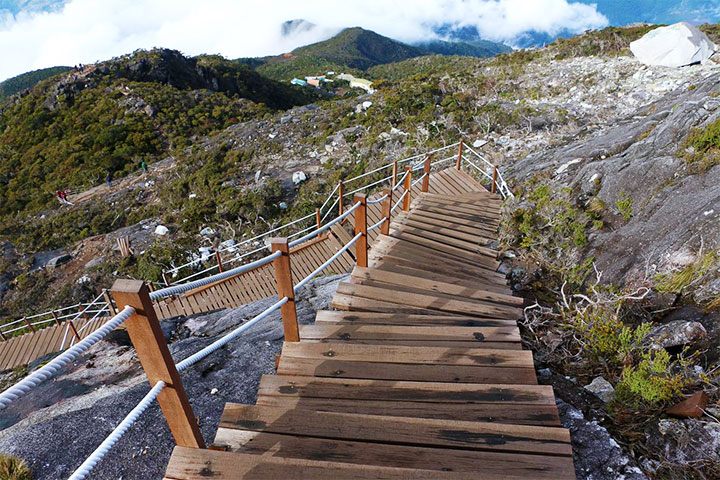
Upon arriving at Panalaban, climbers will have some time to rest and recharge their energy. The climb to the summit resumes before dawn, normally between 2 a.m. and 3 a.m. the next morning. In the dark, the climb goes over some steep sections with wooden stairs in sub-alphine forest. The climb to reach the summit requires climbers to hold onto an affixed rope. Therefore, climbers are advised to wear thick woven gloves in order to ward off the cold as well as to prevent their palms from getting cuts. Climbing up the rock slopes on the side of the Panar Rock Face quickly leads to the Sayat-Sayat huts (3,668m, 12,034 ft).
Here climbers are checked for security to account for the number of people ascending and descending the summit. Due to effects of the high altitude, climbers may find it difficult to breathe and move slowly as the air thins out. There is a white rope attached to the rock section on the summit plateau. It’s function is to guide, orientate and assist climbers to the summit in the dark or dense fog.
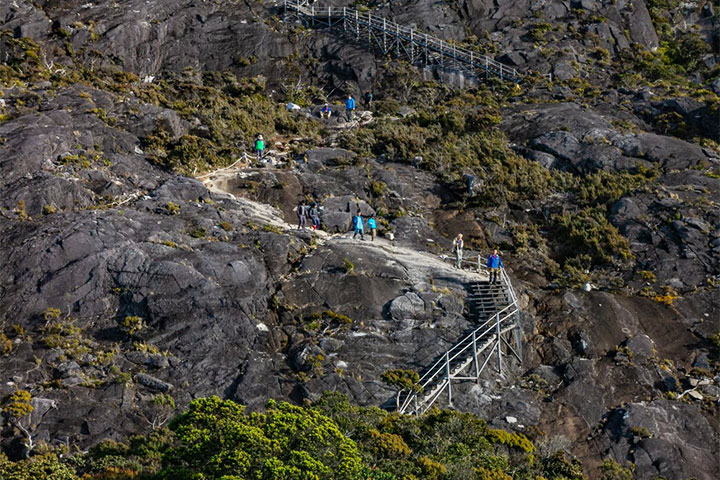
Final part of the ascent requires climbers to scramble over loose rocks and large boulders for about 90 m before reaching Low’s Peak. The climb from Panalaban to the summit normally takes about 3 to 4 hours for most people, just in time to catch the sunrise.
After the victorious moment of summiting Low’s Peak, and snapping away photographs as momento, climbers make a quick descent back to their huts in Panalaban for a quick breakfast, before heading down to Timpohon Gate. The remaining descent takes about another 3 to 6 hours depending on the fitness and physical condition of the climbers.
The descent could be quite rapid for some but tough on the knees, and climbers must be mindful that the route can be slippery, because often the rain sets in during the late morning. Look out for the extremely rare and endemic Kinabalu Leech and its prey, the Kinablau Blue Worm, which will emerge from the soil when it pours.
Another exciting way to conquer Mount Kinabalu is through the Mountain Torq Via Ferrata trail. To visit other peaks at Mount Kinabalu, other than Low’s Peak, climbers require rock climbing and professional equipment.








